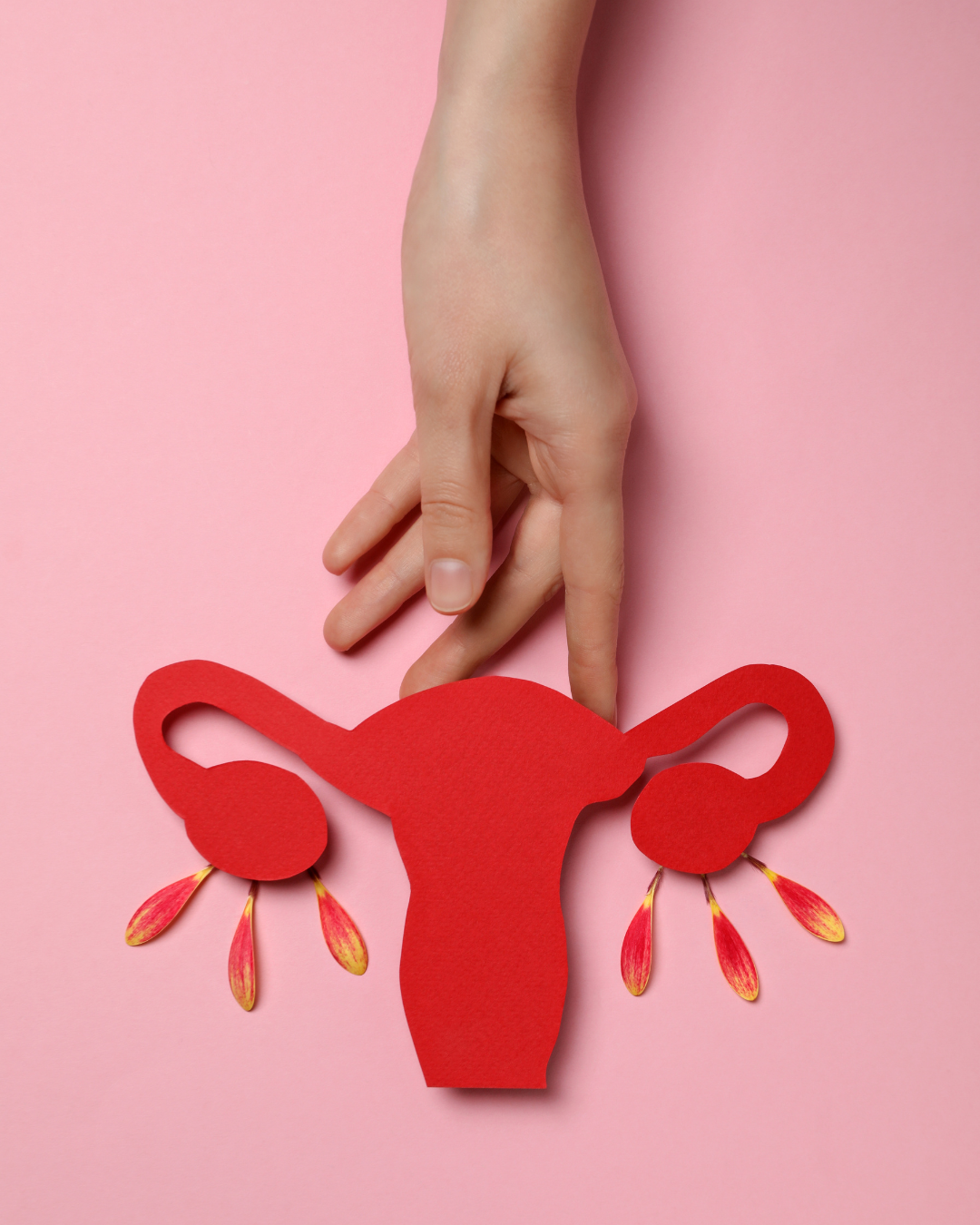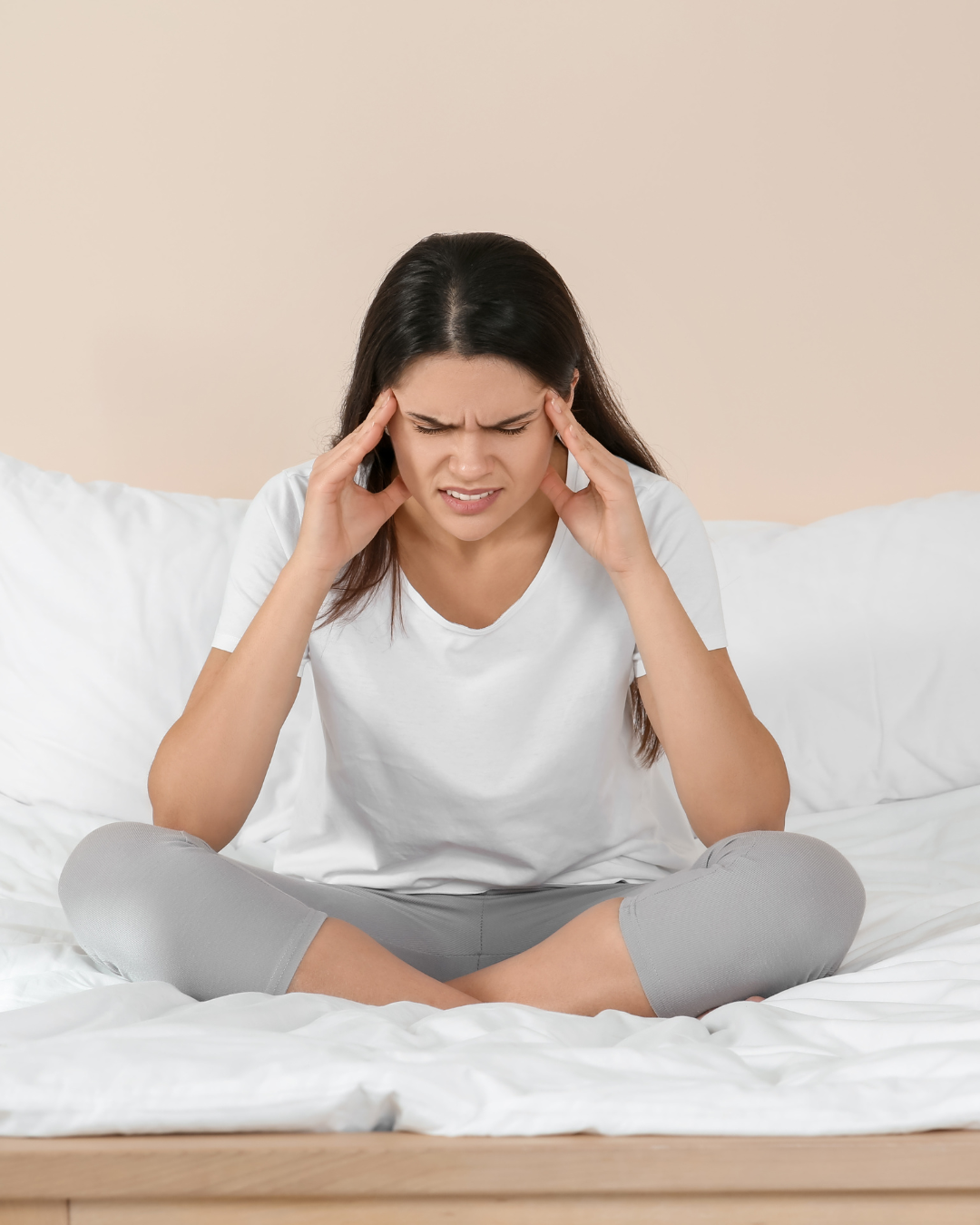ADHD in Women
When Hormones Turn Up the Volume (PMDD + Perimenopause Connection)
Ever feel like your ADHD symptoms have a mind of their own?
One week, you’re managing. You’re focused enough to get through your to-do list, the kids’ schedules, and maybe even carve out a little time for yourself.
Then suddenly — bam — you hit a wall. You’re foggy, irritable, impulsive, and emotional. You forget what you were saying mid-sentence, snap at your partner for no reason, or blow through your budget with an online shopping binge you barely remember clicking “buy” on.
For many women, these swings aren’t random. They’re tied to the luteal phase (PMDD) or the transition into perimenopause.
And here’s the kicker: it’s not just your ADHD acting up. It’s your hormones, inflammation, and dopamine systems colliding.
This is why ADHD in women is so often misunderstood. For decades, research focused on young boys. Girls and women slipped through the cracks, misdiagnosed with anxiety or depression, told to “just try harder.” Meanwhile, their ADHD symptoms were actually being supercharged by estrogen changes and inflammation.
Today, we’re going to dive deep into:
Why ADHD looks different in women.
The estrogen–dopamine connection (and why it matters).
How PMDD and perimenopause can crank up symptoms.
Why inflammation makes it all worse.
And how a functional medicine approach can uncover the hidden drivers and finally bring relief.
If you’ve ever thought: “I feel like two different people depending on the week” — this one’s for you.
ADHD in Women: The Missing Conversation
Here’s the reality: ADHD in women is often underdiagnosed and undertreated.
Why?
Girls are more likely to have inattentive symptoms (daydreaming, disorganization) than hyperactive ones. Teachers notice the boy bouncing in his chair — not the girl staring out the window.
Women often mask symptoms with coping strategies (lists, reminders, perfectionism) until hormones shift and the cracks show.
Many women aren’t diagnosed until their 30s or 40s — often after PMDD symptoms become unbearable or perimenopause hits like a freight train.
And when they do finally get help, the hormone connection is rarely addressed.
Estrogen and Dopamine: The ADHD Axis
Estrogen isn’t just a “reproductive hormone.” It’s a brain hormone with direct influence on dopamine, the neurotransmitter most tied to ADHD.
Here’s what research shows:
Estrogen boosts dopamine production and receptor sensitivity in areas that control focus, planning, and impulse control.
Estrogen fluctuations can alter symptoms within hours or days — which is why many women feel their ADHD shift suddenly around ovulation, luteal phase, or perimenopause.
When estrogen dips, dopamine dips. And when dopamine dips, ADHD symptoms spike.
Think about it:
Trouble finishing tasks.
Constant interruptions.
Impulsive decisions.
Racing thoughts.
Emotional meltdowns.
All of these get worse when estrogen is low. This is the biochemical reason why ADHD is so sensitive to menstrual cycles and life transitions like perimenopause.
PMDD and ADHD: The Luteal Phase Storm
If you live with both ADHD and PMDD, you know it’s not “just PMS.” PMDD can make you feel:
Like you’re crawling out of your skin.
Snapping at loved ones over the tiniest things.
Exhausted, foggy, and unmotivated.
So impulsive you make choices you regret within hours.
Overwhelmed by waves of sadness, anger, or even suicidal thoughts.
Research shows PMDD isn’t caused by abnormal hormone levels — it’s a problem of hormone sensitivity. Women with PMDD react differently to normal changes in estrogen and progesterone.
Layer ADHD on top of that, and suddenly you have a storm:
Impulsivity → even higher.
Emotional dysregulation → out of control.
Executive dysfunction → paralyzing.
Suicidality → more likely, especially in luteal phase.
It’s not “all in your head.” It’s biology: estrogen dips, dopamine weakens, and inflammation rises — leaving your brain more vulnerable to impulsive decisions and emotional crashes.
Perimenopause: When ADHD Suddenly Gets Worse
Then there’s perimenopause. This is the 5–10 year transition leading up to menopause where estrogen and progesterone don’t just decline — they swing unpredictably. One month you’re flooded with estrogen, the next month it plummets. For women with ADHD, this feels like:
“I thought I had my ADHD under control, but now it’s back with a vengeance.”
“I can’t finish a thought, let alone a task.”
“I feel foggy, forgetful, and out of control.”
“My emotions are on a hair-trigger.”
Research backs this up:
Perimenopausal women often report new ADHD-like symptoms (poor focus, working memory, organization) even if they were symptom-free before.
A clinical trial showed that lisdexamfetamine (Vyvanse) improved executive function in perimenopausal women, suggesting estrogen decline unmasks dopamine weaknesses.
Estrogen loss during perimenopause disrupts both dopamine and serotonin — meaning more impulsivity, less focus, and higher risk of mood swings and depression.
Perimenopause isn’t just about hot flashes. For many women, it’s the first time ADHD feels unmanageable.
Inflammation: The Silent Amplifier
Now let’s add the third piece of the puzzle: inflammation. Across ADHD, PMDD, and perimenopause, studies consistently show:
Higher IL-6, CRP, and other inflammatory markers.
Inflammation impairs the prefrontal cortex (your “brakes”) and over-activates the amygdala (your “alarm system”).
The result? Poor impulse control, rash decisions, mood swings, and brain fog.
This is why inflammation can make you feel like:
You’re constantly on edge.
You can’t control what comes out of your mouth.
You’re exhausted but wired.
You’re trapped in a cycle of regret: “Why did I just do that?”
Inflammation doesn’t just affect your body — it hijacks your decision-making.
How Crappy This Can Really Feel (The Lived Experience)
Let’s be real: when ADHD collides with PMDD or perimenopause, life can feel unbearable.
You wake up already tired.
Your brain feels like cotton — everything takes twice the effort.
You forget appointments, misplace keys, or lose track of conversations.
You lash out at your kids, then spend hours drowning in guilt.
You blow through your budget with online shopping, then panic about money.
You feel disconnected, hopeless, or like you’re “too much” for people to handle.
This isn’t laziness. It isn’t weakness. It’s your brain under hormone + inflammation stress.
Why Functional Medicine Matters
Here’s the problem: standard ADHD care doesn’t address hormones or inflammation. Most women are offered stimulants, maybe an antidepressant, and that’s it. But functional medicine asks: what’s driving the symptoms? That’s where labs come in. By testing, we can uncover hidden imbalances fueling the rollercoaster.
The Labs I Use
Bloodwork: CRP, IL-6, thyroid, vitamin D, ferritin, B12, zinc, magnesium.
OAP (Organic Acids): Neurotransmitter cofactors, oxidative stress, gut metabolites.
GI-MAP: Gut dysbiosis, infections, inflammation, beta-glucuronidase (estrogen metabolism).
HTMA: Zinc:copper ratio, magnesium, sodium/potassium balance + heavy metal screening
DUTCH: Estrogen/progesterone metabolites, cortisol rhythms.
Genetics: MTHFR, COMT, dopamine receptor genes, inflammatory variants.
These aren’t “extra” tests. They’re the missing puzzle pieces that explain why ADHD symptoms spike in PMDD and perimenopause.
Functional Strategies That Actually Help
Once we know your unique drivers, we can build a personalized plan. Some evidence-based strategies include:
Nutrition:
Protein-rich meals for stable dopamine.
Omega-3s and polyphenols for inflammation.
Cruciferous veggies for estrogen metabolism.
Supplements:
Magnesium and zinc to support hormones + dopamine.
Vitamin D for mood and immunity.
NAC to reduce inflammation and impulsivity.
Probiotics for gut-brain balance.
Lifestyle:
Sleep hygiene (crucial in perimenopause).
Nervous system support (EFT, mindfulness, breathwork).
Movement that balances, not depletes (yoga, walking, strength).
Cycle syncing:
Planning higher-output work during follicular/ovulatory phases.
Building in rest and self-compassion during luteal.
This isn’t about “curing” ADHD. It’s about reducing the inflammatory + hormonal fuel so you can think clearer, feel calmer, and make choices you’re proud of.
You’re Not Broken
If your ADHD feels worse before your period or since perimenopause began, you’re not broken. You’re not weak. You’re not “failing at adulting.”
You’re experiencing the biology of hormones, dopamine, and inflammation colliding.
The good news? Once you see the pattern, you can do something about it.
👉 If you’re tired of feeling like a different person every month, or if perimenopause has flipped your ADHD upside down, let’s figure out what’s really driving your symptoms.
And learn how functional labs and personalized support can help. Or…
Designed to nourish your brain, support estrogen metabolism, and calm inflammation — so you can start feeling more like yourself right away. You don’t have to struggle your way through impulsivity, brain fog, and emotional crashes. With the right tools, you can take back control and finally feel like yourself again.
References
Almey, A., Milner, T. A., & Brake, W. G. (2015). Estrogen receptors in the central nervous system and their implication for dopamine-dependent cognition in females. Hormones and behavior, 74, 125–138. https://doi.org/10.1016/j.yhbeh.2015.06.010
Amiel Castro, R. T., Ehlert, U., & Fischer, S. (2021). Variation in genes and hormones of the hypothalamic-pituitary-ovarian axis in female mood disorders - A systematic review and meta-analysis. Frontiers in neuroendocrinology, 62, 100929. https://doi.org/10.1016/j.yfrne.2021.100929
Antoniou, E., Rigas, N., Orovou, E., Papatrechas, A., & Sarella, A. (2021). ADHD Symptoms in Females of Childhood, Adolescent, Reproductive and Menopause Period. Materia socio-medica, 33(2), 114–118. https://doi.org/10.5455/msm.2021.33.114-118
Epperson, C. N., Shanmugan, S., Kim, D. R., Mathews, S., Czarkowski, K. A., Bradley, J., Appleby, D. H., Iannelli, C., Sammel, M. D., & Brown, T. E. (2015). New onset executive function difficulties at menopause: a possible role for lisdexamfetamine. Psychopharmacology, 232(16), 3091–3100. https://doi.org/10.1007/s00213-015-3953-7
Osianlis, E., Thomas, E. H. X., Jenkins, L. M., & Gurvich, C. (2025). ADHD and Sex Hormones in Females: A Systematic Review. Journal of attention disorders, 29(9), 706–723. https://doi.org/10.1177/10870547251332319
Young, S., Adamo, N., Ásgeirsdóttir, B. B., et al. (2020). Females with ADHD: An expert consensus statement taking a lifespan approach providing guidance for the identification and treatment of attention-deficit/hyperactivity disorder in girls and women. BMC Psychiatry, 20, 404. https://doi.org/10.1186/s12888-020-02707-9



